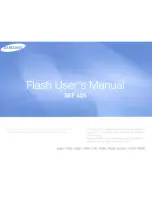
Safety Practices and Hazards
Agilent 5100 and 5110 ICP-OES User’s Guide
11
Electrical Hazards
The spectrometer system and some accessories contain electrical
circuits, devices and components operating at dangerous voltages.
Contact with these circuits, devices and components can cause death,
serious injury or painful electric shock. Panels or covers which are
retained by screws on the spectrometer and accessories may be
opened
only
by Agilent
trained, Agilent-qualified or Agilent
approved
field service engineers (unless specified otherwise). Consult the
manuals or product labels supplied with your personal computer
(PC), monitor, printer and water-cooling system to determine which
parts of those systems are operator-accessible.
Connecting the Agilent ICP-OES to a power source that is not
equipped with a protective earth contact creates a shock hazard for
the operator and can damage the instrument. Likewise, interrupting
the protective conductor inside or outside the Agilent ICP-OES or
defeating the power cord ground creates a shock hazard for the
operator and can damage the instrument.
Other Precautions
Use of the spectrometer system and accessories may involve
materials, solvents and solutions which are flammable, corrosive,
toxic or otherwise hazardous. Careless, improper or unskilled use of
such materials, solvents and solutions can create explosion hazards,
chemical burn hazards, fire hazards, toxicity and other hazards that
can result in death, serious personal injury or damage to equipment.
Apply all necessary precautions including use of lab coats, safety
goggles and other appropriate forms of personal protection. All
wastes should be disposed of in accordance with local regulatory
requirements.
Operation of an ICP-OES involves analysis of solutions that have
been prepared in or digested with acids, or in some cases, samples
that have been prepared in organic solvents.
In case of uncertainty about a specific fluid, that fluid should not be
used until confirmation by the manufacturer that it will not present a
hazard.












































